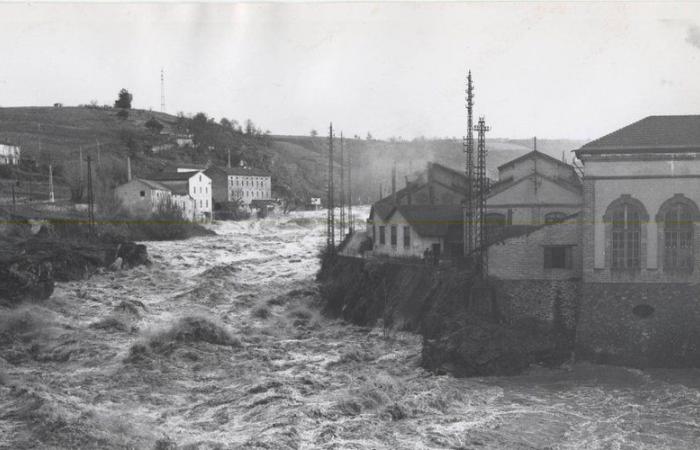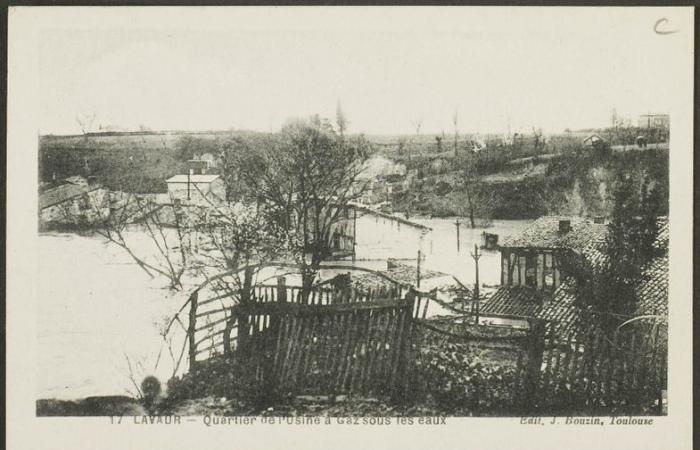the essential
SERIES (1/12). As part of our Archive Treasures series, which retraces the great moments in the history of the Tarn, we look back at the great flood of 1930 which devastated the Tarn basin, causing nearly 250 deaths in the South.
The year is 1930. For two days, March 2 and 3, the Tarn basin suffered floods of rare intensity which caused several of its main rivers to emerge from their beds: the Tarn, but also the Agout, Thoré and Arnette. This episode, described as the “flood of the century” by specialists, also ravaged the departments of Aude, Lot-et-Garonne and especially Tarn-et-Garonne, causing 250 deaths in the south of France.
Departmental archives
In the Tarn, torrents poured into Labastide-Rouairoux, Mazamet, Castres, Lavaur, Saint-Sulpice, Gaillac and Rabastens. The consequence of a very rainy winter which saturated the soil and covered the Monts de Lacaune and the Montagne Noire with snow. Their melting fed the waterways.
A real climate catastrophe
It is in this context that the climate catastrophe occurs. At the beginning of March, significant rainfall fell in the South. Sunday March 2, the water level rises dangerously. In Albi, the Tarn touches the highest point of the arches of the Pont Vieux. On November 3 at 9 p.m., it reached a peak of 9.10 m, almost equaling the floods of 1766 and 1808.
Departmental archives
A little further downstream, at Gaillac, we are also close to records with a peak at 13.9 m. The Garden of the Bishop's Palace of Saint-Michel Abbey is completely flooded. In Rabastens, the Tarn peaks at 18 meters. Never seen before! In Castres, the water passes over the two bridges. The Agout exceeds 7 meters and the city is completely flooded. The Travet bursts its banks, flooding Place de l'Albinque and many surrounding businesses. The residents try as best they can to save everything they can and go upstairs to protect themselves from the flood. Two people were found dead, trapped by water.
The whole Tarn is under water
Upstream, on the Mazamétain, the Arnette is in fury and floods and destroys the wool factories which make the city rich. In Lavaur, the Agout overflows and floods the Gas Factory district. Its level rises to the unprecedented level of 14 meters, or 6 more than the most extraordinary floods. Factories and around fifty houses were wiped off the map.
In Saint-Sulpice-la-Pointe, where the Agout and the Tarn join, the inhabitants are awakened by the tocsin. The city is completely underwater. The level is 20 meters above its low water level (lowest level). At the suspension bridge, the current submerges the roadway before carrying away the bridge deck. Only the four founding pillars will remain there. There too, many houses were destroyed.
Regardless of the place in the Tarn where the flood has caused great damage, it is above all the surprise that dominates. During this weekend, the employees responsible for the telegraph were off duty. But that wouldn't have changed much. At that time, weather alerts and yellow, orange and red vigilance did not exist. Residents only discovered disasters at the last moment, when they occurred.
This was the case in 1930 in Tarn, but also and especially in Tarn-et-Garonne, the department most affected by this episode. Moissac, completely under water, will have 131 deaths. In Montauban, 29 bodies will be found. A terrible flood which will remain as one of the worst in history and which will give rise to a day of national mourning on March 9.







